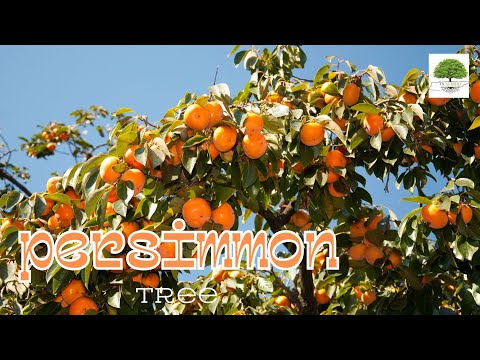Persimmon Tree Seedlings | Diospyros virginiana Explained
Persimmon seedlings produce reddish-brown, sweet, and astringent fruits, adding ornamental and edible value to landscapes. They are versatile and valuable additions to landscaping, offering a range of aesthetic, ecological, and functional benefits. Their unique characteristics make them a cherished choice among landscape architects and homeowners alike.
Aesthetically, it brings beauty to any outdoor space. Its glossy green leaves, which turn vibrant shades of orange and red in the fall, provide a stunning display of seasonal foliage.
The distinctive bark, featuring tessellated blocks that exude an attractive pattern, adds an interesting visual texture to the landscape year-round. The flowers bloom with delicate, bell-shaped flowers during late spring and early summer, enhancing their appeal.
Wildlife Benefits of Planting Persimmon Tree Seedlings
Ecologically, it supports local wildlife, enhancing the area's biodiversity and promoting a healthy ecosystem. Additionally, it provides shelter and nesting sites for birds and small mammals, further contributing to the balance of local wildlife populations.
Functionally, it offers practical advantages as well. Its shade canopy creates a cooling effect, making it an ideal shade type for patios, outdoor seating areas, and even residential buildings. This natural cooling property can help reduce energy consumption by providing relief from the sun's heat. The wood is also highly valued for woodworking due to its durability and attractive grain, making it a potential raw material for various projects.
These Persimmon Tree Seedlings Are low-maintenance
Furthermore, it is relatively low-maintenance, requiring minimal pruning and care once established. Its adaptability to various soil types and growing conditions makes it appealing as a landscaping choice. Whether used as a standalone specimen type or integrated into a larger landscape design, it brings its unique blend of visual allure, ecological contribution, and functional benefits.
In conclusion, the plant stands as a testament to the many benefits it offers in landscaping beyond its ornamental value. From its striking aesthetics to its ecological support and functional advantages, it is a type that enhances the visual appeal of outdoor spaces and contributes to the broader health and sustainability of the environment.
Fruiting Attributes Of Them
Characteristics of these Saplings
Sustainable Practices

Exposure
Persimmon tree seedlings thrive in full sun, requiring at least six to eight hours of direct sunlight daily. They can handle shade but will deliver better fruit and grow more vigorously with full sunlight exposure.
Height at Maturity
Over 25 Feet
Usage
Fruit
Shipped As
Bare-root
Ships
UPS
Planting Zones
4-9





